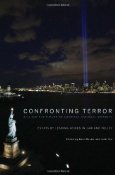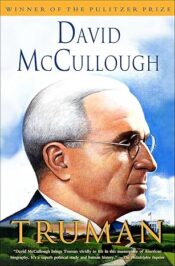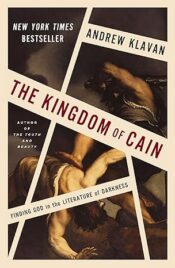
Confronting Terror Edited by Dean Reuter and John Yoo
 For a short course on what President George Bush called “the war on terror†you won’t find a better book. Twenty essays, by well-known experts at various points on the political spectrum, discuss enhanced interrogation, the Patriot Act, security policies, personal liberty, and other legal and policy issues under the Bush and Obama administrations.
For a short course on what President George Bush called “the war on terror†you won’t find a better book. Twenty essays, by well-known experts at various points on the political spectrum, discuss enhanced interrogation, the Patriot Act, security policies, personal liberty, and other legal and policy issues under the Bush and Obama administrations.
Readers will find the book informative and engrossing for it examines still unresolved questions regarding America’s response to terrorism. Ten plus years after 9/11, even the identity of those who mean us harm is in dispute.
President George W. Bush apparently had no difficulty describing America’s enemies. But, Victor Davis Hanson writes:
â€New nomenclature–much of it vague–was introduced by members of the Obama administration: Formerly ‘rogue states’ were now officially ‘outliers,’ as ‘enemy combatants ‘ at Guantanamo were renamed the more neutral-sounding ‘detainees.’ ‘Jihad’ along with ‘radical Islam’ simply disappeared–the American people were not to be reminded that those who sought to kill them before and after September 11 were exclusively Islamic radicals.â€
For example, John Brennan, Mr. Obama’s senior counter-terrorism adviser, told The Telegraph in May of 2010: it is wrong, “’to describe our enemy as jihadists or Islamists’ because that would ‘play into the false perception’ that al-Qaeda and its allies were ‘religious leaders and defending a holy cause, when in fact, they are nothing more than murderers.’â€Â Barack Obama Declares The War on Terror is Over – The Telegraph.
Murderers they certainly are, but Andrew McCarthy expounds on why “confronting the animating ideology of the enemy†is important.
“Willful blindness to the ideology that inspires our enemies has rendered Americans more vulnerable. The ne plus ultra of security is to know thy enemy—a maxim attributed to the ancient Chinese strategist Sun Tzu, but also rooted in common sense. The study of what animates one’s adversaries, in order to anticipate and thwart their operations, is the irreducible core of military threat doctrine, and basic even to competent law enforcement. Without knowing the enemy, our nation will never arrive at the most effective counter-terrorism policy, much less defend our society from the civilizational jihad’s stealthier encroachments.â€
In Michael Chertoff’s view, mischaracterizing the enemy has led to less effective law enforcement policies.
The traditional mode of organizing authorities around the definition of the threat as either military or criminal no longer fits the reality of the security. Authorities must be designed and enacted with a view to empowering security agencies with as many tools as possible to be applied overseas and at home. While these authorities must be bounded by constitutional limits, those limits permit far more flexibility than a binary system allows.
Edwin Meese III and Paul Rosenzweig examine the Bush and Obama administrations’ efforts to construct a cohesive national response to the terrorists challenge, and finds them both wanting, but for different reasons.
Richard Epstein discusses the need to balance national security and civil liberties. He outlines two types of situations: the first is the need to discover terrorist activities before they can be undertaken; the second deals with the apprehension and treatment of individuals who have engaged in efforts to harm people and property or steal government secrets. He discusses communications interceptions, profiling, treatment of aliens and citizens, and detention and trial as they relate to each situation.
Marc Thiessen examines the information obtained from capturing and interrogating senior terrorist leaders, specifically that obtained through enhanced interrogation techniques that allowed us to “discover, dismantle, and disrupt the two terrorist networks that were planning the second wave of al-Qaeda attacks.â€
He faults President Obama for eliminating the CIA interrogation program. “Obama even goes to CIA headquarters in spring of 2009 and tells the assembled officers that he understands his decision will force the government to protect the American people ‘with one hand tied behind our back…. And that’s OK.’â€
Thiessen points out that the underwear bomber’s attempt to blow up Northwest Airlines Flight 253 over Detroit in Christmas Day, 2009 was thwarted, not be US intelligence, but because of a poorly constructed explosive device and alert passengers. Similarly, the detection of two bombs enroute from Yemen to the United States on separate cargo planes on October 29, 2010 was the result of intelligence received from Saudi Arabia’s security chief.
However, rather than take a key terrorist leader alive for interrogation (as the military advised) the Washington Post reported in February of 2010, that the president consciously decided not to do so and “the opportunity to interrogate one of the most wanted U.S. terrorism target was gone forever.â€
Thiessen cites the congressional testimony of Vice Admiral William McRaven, who stated, “the Obama administration has no clear plan for handling suspected terrorist leaders if they are caught alive outside a war zone.â€Â It appears the problem has been resolved by a policy of killing rather than capturing potential sources of information.
Opposing views are not neglected. Among other issues, Jonathon Turley, Anthony Romero, and Nadine Strossen disagree with the foregoing authors about the venue for trying terror suspects, expansion of executive authority in matters of national security, the limits of surveillance and the wars in Iraq and Afghanistan. Regarding the use of enhanced interrogation techniques, Alan Dershowitz calls them torture, but departs from Turley, Romero and Strossen by defending their use under carefully controlled conditions.
In the concluding essay John Yoo reviews this president’s record and compares it to the Framers vision of the office, citing James Madison’s and Alexander Hamilton’s Federalist Papers. Yoo finds the presidency’s constitutional priorities reversed:
Throughout his first years in office, Obama has placed national security second to his ambitious plan to remake the American economy and society…
Obama’s second and even more significant reversal of the presidency’s constitutional position is his hesitancy toward–and even retreat from–its core role as the protector of the nation’s security.
Yoo points out that not a single high-ranking al-Qaeda leader his been captured during the Obama administration. The president’s refusal to allow the military to bring any more detainees to Cuba, he writes, leaves “only two options: killing terrorists or catch-and-release.â€
Confronting Terror gives readers, regardless of political ideology, much to think about. The essays enlarged this reviewer’s understanding even when in disagreement with the essayist.
 The posts are coming!
The posts are coming!


0 comments
Kick things off by filling out the form below.
Leave a Comment